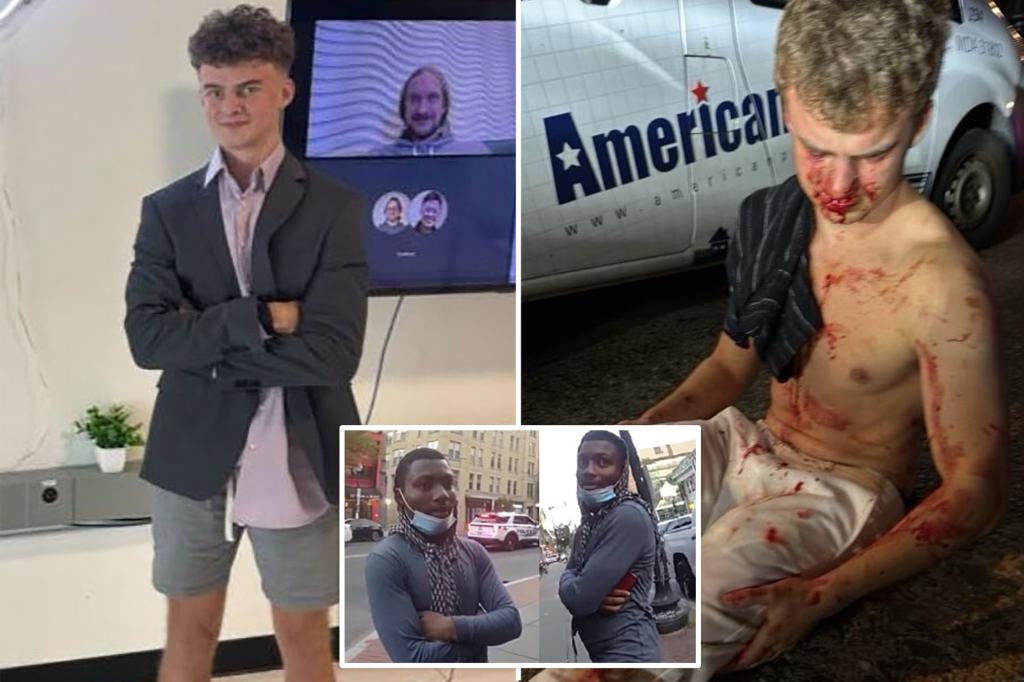Teens Face Additional Charges in Violent DC Carjacking Case
In a case that has gained national attention and influenced federal policy, two Maryland teenagers have been charged with additional offenses following a violent attempted carjacking in Washington, DC. The incident, which left former Department of Government Employee (DOGE) staffer Edward Coristine severely beaten, has become emblematic of crime concerns in the nation’s capital. Initially charged with unarmed carjacking, the 15-year-old suspects—a boy and a girl—now face assault and robbery charges as well, according to reports from Politico. The violent nature of this attack and its aftermath highlight ongoing tensions about youth crime, public safety, and jurisdictional authority in Washington, DC.
The case has progressed through the juvenile justice system with careful consideration of the suspects’ ages and supervision requirements. During a recent status hearing, the judge ordered the female suspect released from a youth detention facility into the custody of her caretakers under strict 24-hour curfew conditions. Her male counterpart had already been released to his parents’ supervision following an earlier hearing. As is standard practice in juvenile cases, the identities of the teenage suspects remain protected by law. These decisions reflect the complex balance courts must strike between accountability for serious offenses and the specialized considerations that apply to underage defendants in the criminal justice system.
Police reports indicate the violent encounter occurred around 3 a.m. when the suspects allegedly approached Coristine and another person standing beside their vehicle. What began as an approach escalated quickly into assault and an attempted carjacking. Law enforcement officers, who happened to be in the vicinity, managed to apprehend the two 15-year-old suspects at the scene. However, authorities have indicated that other individuals may have been involved in the attack, and the investigation continues as police search for additional suspects. The late-night timing and the apparently opportunistic nature of the crime have raised concerns about public safety in the district, particularly during overnight hours.
The incident gained extraordinary visibility when President Trump shared a graphic image of the bloodied victim on social media, referring to Coristine by the nickname “Big Balls” and using the case to criticize public safety management in the District of Columbia. “We just almost lost a young man, beautiful handsome guy that got the hell knocked out of him,” Trump wrote in his post. His message continued with a direct warning: “If D.C. doesn’t get its act together, and quickly, we will have no choice but to take Federal control of the City, and run this City how it should be run, and put criminals on notice that they’re not going to get away with it anymore.” This stark message transformed what might have been a local crime story into a national political issue overnight.
The president’s involvement in this case has extended beyond social media commentary to direct federal intervention in DC’s governance. Following his initial statements about the attack, Trump announced plans for federal authorities to assume control over aspects of the District’s policing and activated the National Guard with the stated aim of reducing crime. This extraordinary step has reignited long-standing debates about the unique status of Washington, DC, which operates under congressional oversight despite its local government structure. Critics view the intervention as an overreach of federal authority, while supporters maintain that extraordinary crime rates justify extraordinary measures to restore public safety in the nation’s capital.
This case illustrates broader societal tensions around juvenile crime, urban safety, and the proper balance between local governance and federal oversight. For Edward Coristine, the violent encounter left physical and likely psychological scars that will take time to heal. For the teenage suspects, the charges represent a potential turning point in young lives now entangled in serious legal consequences. For Washington, DC, the incident has become a flashpoint in ongoing debates about crime, punishment, and governance. And for the nation, it serves as a stark reminder of how quickly a street crime can transform into a matter of national policy when it occurs in the politically charged environment of the capital city. As the case proceeds through the legal system, these intersecting personal, local, and national narratives will continue to unfold.


